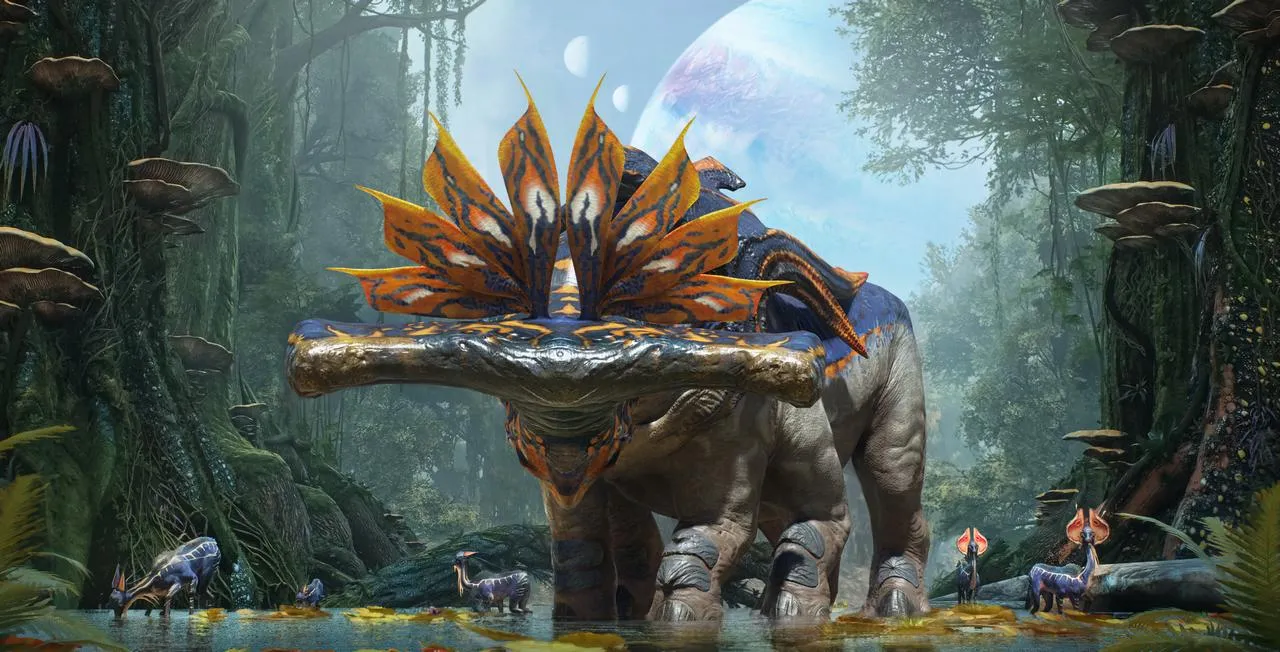
Avatar: Frontiers of Pandora: A Familiar Flight
Contents
The gaming industry has witnessed its share of stumbles in recent years, with major studios struggling to maintain quality, navigate workplace issues, or simply live up to their own legacies. Ubisoft, once revered for franchises like Assassin’s Creed, Prince of Persia, and Far Cry, has become a prime example of this trend. While their recent releases aren’t necessarily bad, they often play it safe, lacking the innovation and excitement that once defined them. This unfortunately extends to their latest venture, a partnership with the billion-dollar Avatar franchise helmed by legendary director James Cameron.
Avatar: Frontiers of Pandora stands apart from the film series, charting its own narrative course within the rich world of Pandora. This presented a golden opportunity for Ubisoft to break free from established formulas and forge something truly unique. Did they seize this chance, or did they simply rehash familiar gameplay loops seen in their other open-world titles? Let’s delve into the world of Pandora and uncover the answer.
Retreading Familiar Territory
 alt text: a Na'vi character aiming a bow and arrow in a lush Pandora landscape
alt text: a Na'vi character aiming a bow and arrow in a lush Pandora landscape
Sadly, Frontiers of Pandora feels overly familiar, especially for those acquainted with Ubisoft’s Far Cry series. Seven years in development, the game ultimately delivers a framework that echoes past titles, particularly Far Cry. The core gameplay loop of liberating outposts, crafting, and exploring a vast open world feels like a rehash of mechanics that have been around for much longer than the game’s development cycle.
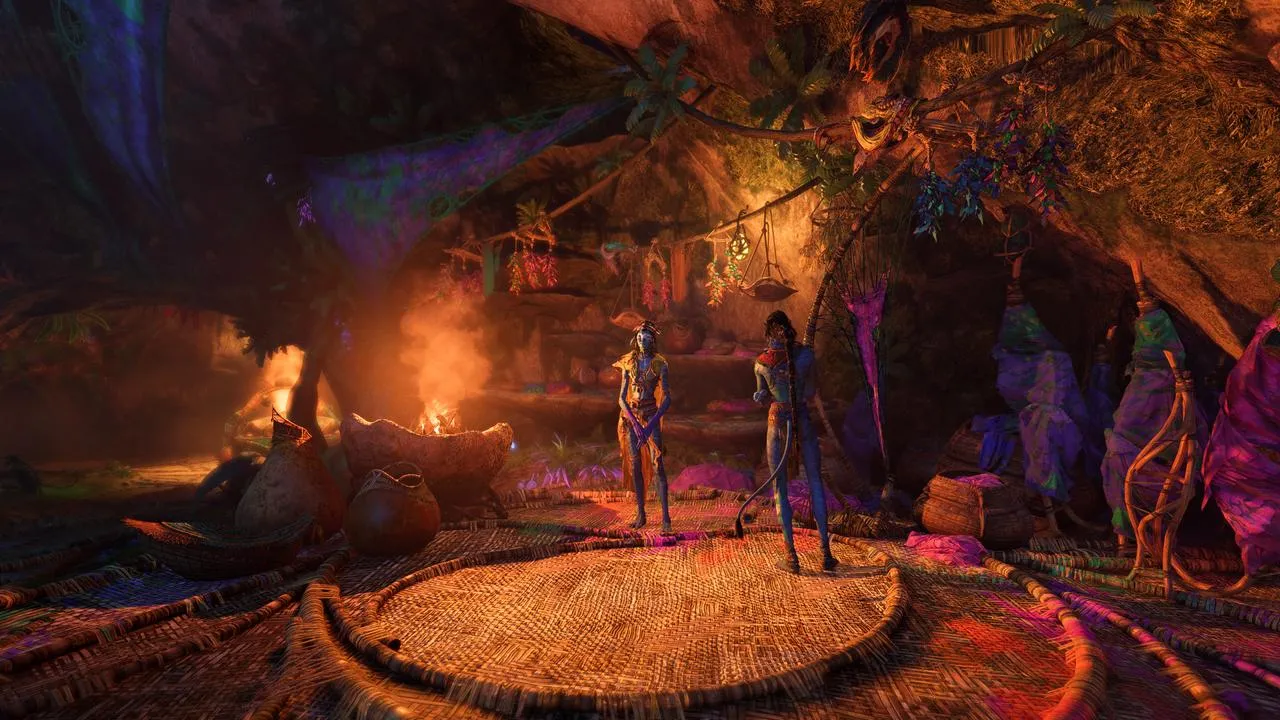 alt text: A Na'vi character riding an Ikran, soaring above the vibrant Pandoran jungle
alt text: A Na'vi character riding an Ikran, soaring above the vibrant Pandoran jungle
The narrative, while independent of the films, falls back on a predictable “fight for liberation” trope, mirroring the central conflict of the Avatar movies. This feels like a missed opportunity to explore other facets of the rich Pandoran world. The gameplay reinforces this familiarity, borrowing heavily from Far Cry 3, 4, 5, and 6. Players assume the role of a reluctant hero, navigating a familiar progression loop of liberating outposts and following NPC directives. The lack of narrative innovation makes the experience feel predictable and somewhat uninspired.
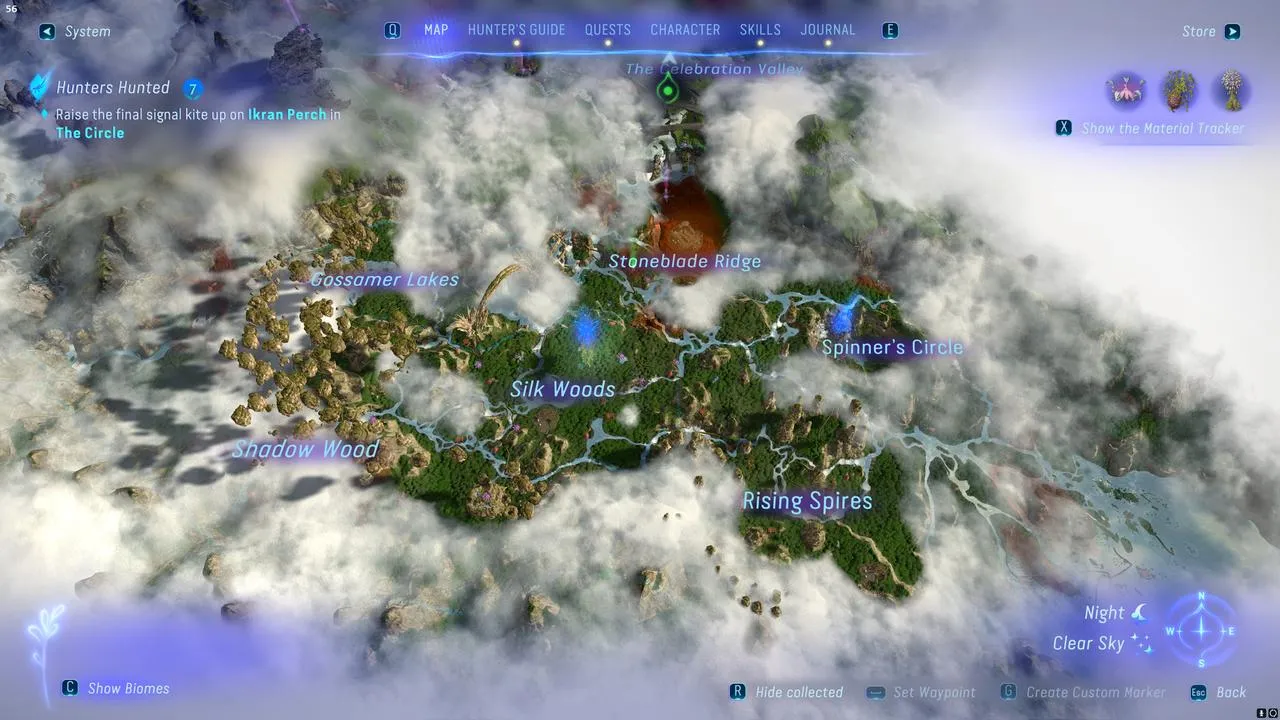 alt text: A Na'vi character perched on a cliff, overlooking the vast expanse of Pandora's floating mountains
alt text: A Na'vi character perched on a cliff, overlooking the vast expanse of Pandora's floating mountains
A significant portion of the gameplay involves traversing the vast, but often empty, landscape, collecting resources, and crafting. While the world is visually impressive, it lacks the dynamic interactions and meaningful activities that would make exploration truly engaging. Outposts feel disconnected, operating independently without any overarching strategic significance. Their presence feels more like padding the map with collectibles than contributing to a living, breathing world. This issue is exacerbated in the second area, a vast grassland that feels particularly barren outside of main story missions.
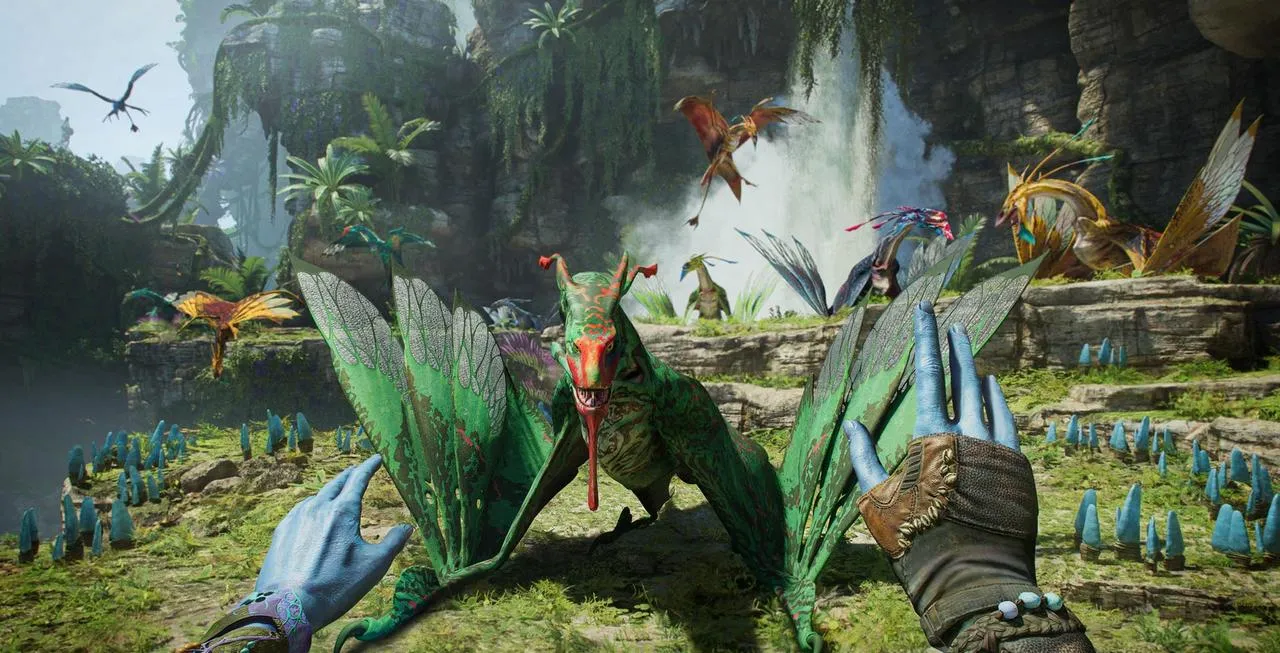 alt text: A Na'vi character engaging in combat with RDA soldiers and machinery
alt text: A Na'vi character engaging in combat with RDA soldiers and machinery
Visual Splendor, but Showing its Age
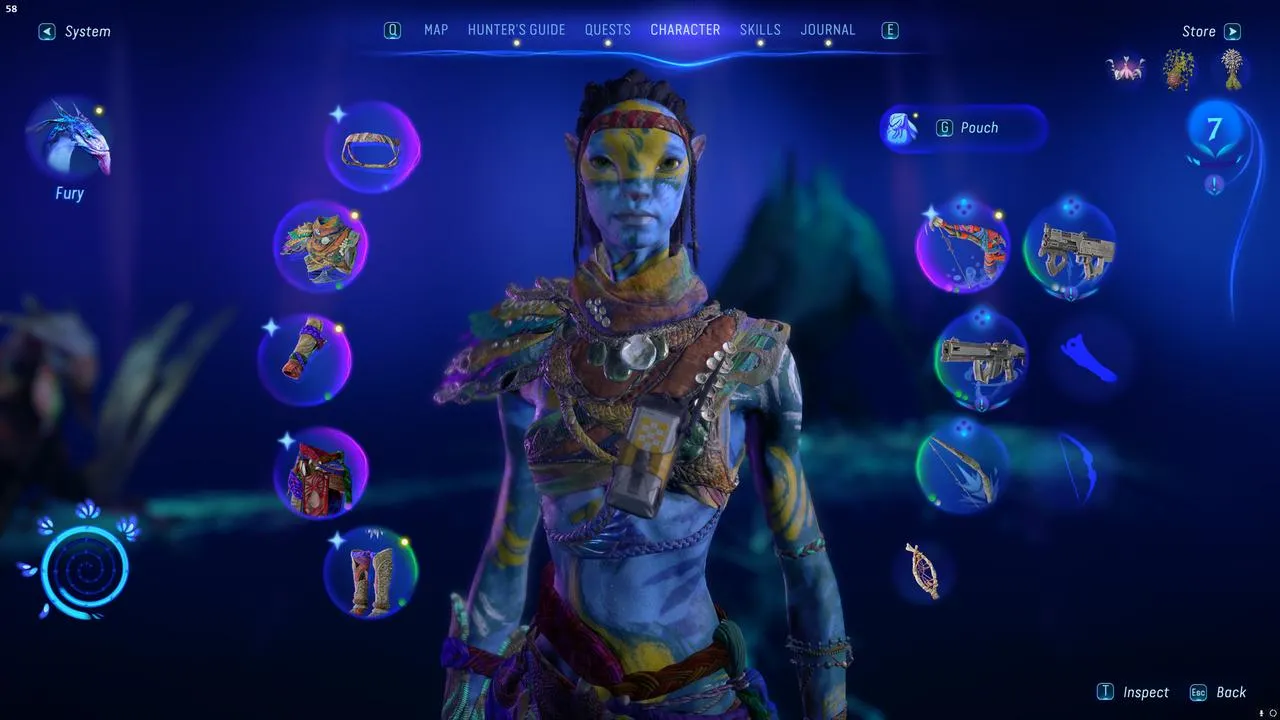 alt text: A panoramic view of Pandora's vibrant jungle, showcasing the lush flora and towering trees
alt text: A panoramic view of Pandora's vibrant jungle, showcasing the lush flora and towering trees
Avatar: Frontiers of Pandora is undeniably beautiful, particularly in its grand vistas. The Snowdrop engine renders Pandora’s lush jungles, floating mountains, and vibrant ecosystem with impressive detail. The dynamic weather system and day-night cycle further enhance the visual experience, offering breathtaking views and a sense of constant change. The unique architecture of the Na’vi settlements, integrated seamlessly into the natural environment, is another visual highlight.
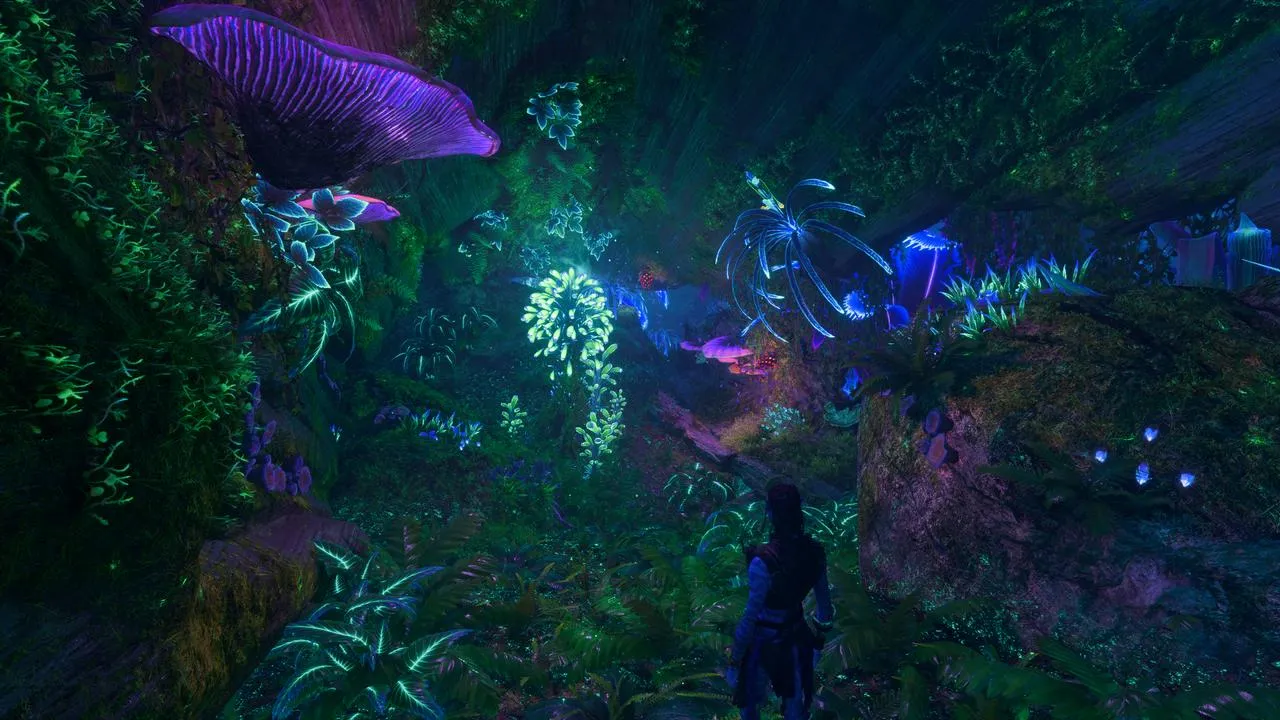 alt text: Close-up view of Pandoran flora, highlighting the intricate details and vibrant colors
alt text: Close-up view of Pandoran flora, highlighting the intricate details and vibrant colors
However, upon closer inspection, the game’s visuals reveal some shortcomings. Textures can appear muddy, and there are noticeable instances of texture pop-in and other graphical glitches. The visual fidelity, while impressive in its scope, doesn’t quite match up to other recent open-world titles. This disparity is particularly evident when comparing the lush, detailed environments of the first area to the more barren landscapes of the second.
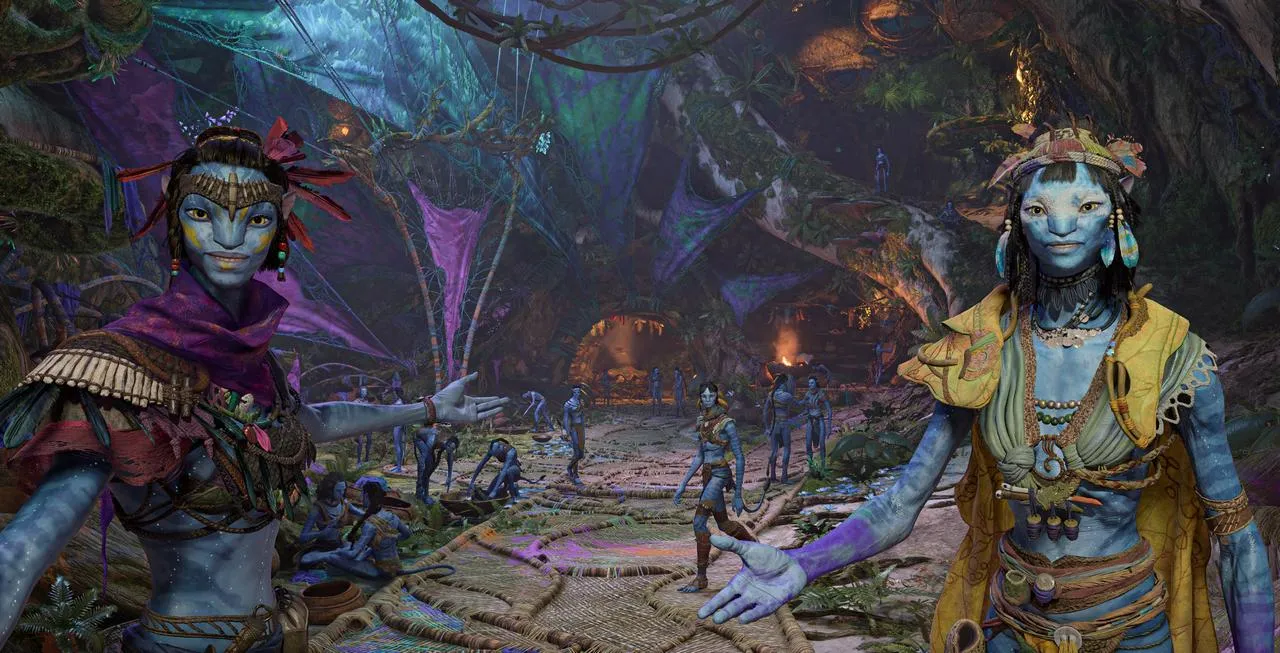 alt text: A Na'vi character riding an Ikran at night, with the bioluminescent flora of Pandora illuminating the scene
alt text: A Na'vi character riding an Ikran at night, with the bioluminescent flora of Pandora illuminating the scene
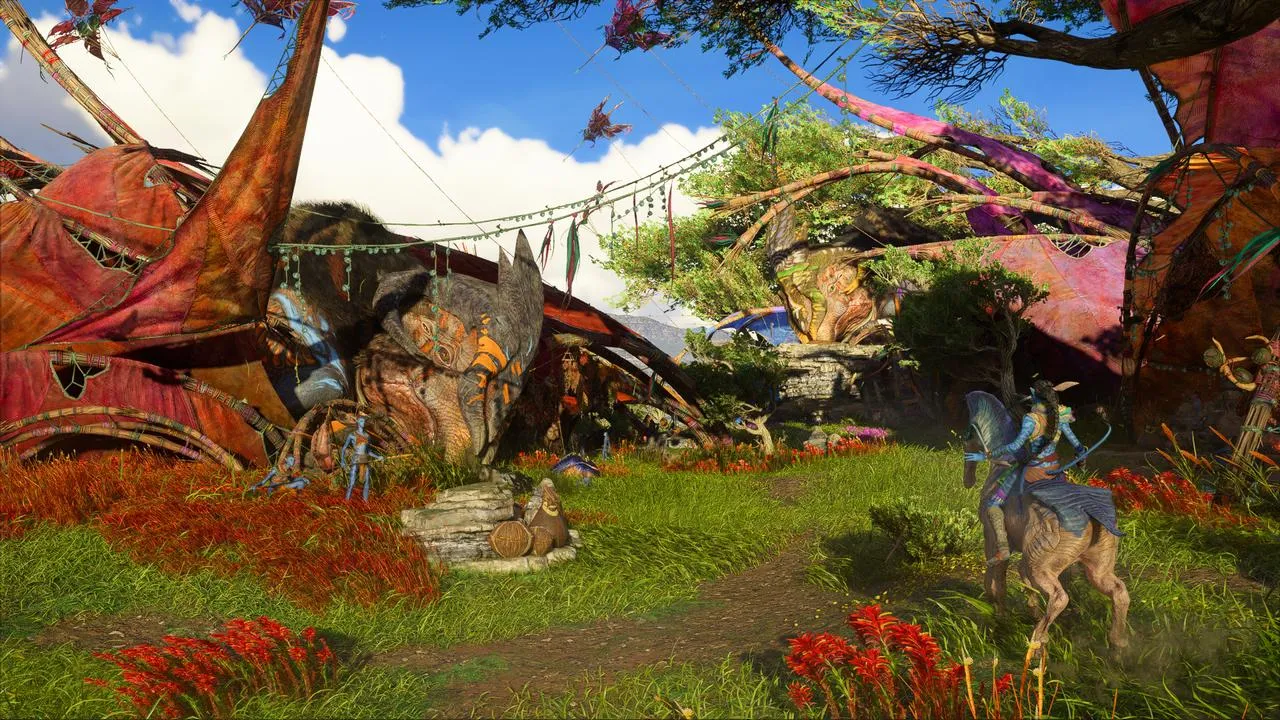 alt text: A view of a Na'vi settlement built into a giant tree, showcasing the intricate architecture and integration with nature
alt text: A view of a Na'vi settlement built into a giant tree, showcasing the intricate architecture and integration with nature
Combat and AI: A Mixed Bag
The combat system initially feels engaging, offering a variety of weapons and approaches. However, it soon becomes apparent that the AI is a significant weakness. Enemies exhibit inconsistent behavior, alternating between obliviousness and pinpoint accuracy. Their pursuit is easily broken, and they rarely employ effective tactics. This makes stealth approaches trivial and open combat less challenging than it should be.
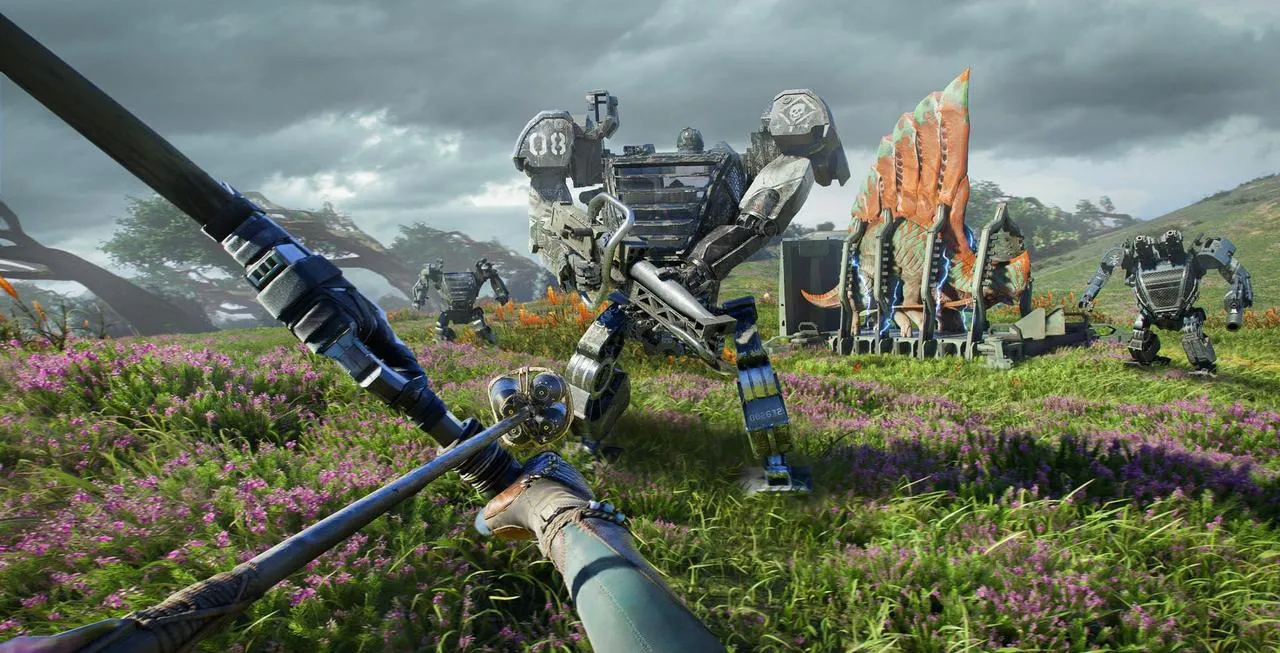 alt text: A Na'vi character aiming a bow and arrow from a hidden vantage point, preparing for a stealth attack
alt text: A Na'vi character aiming a bow and arrow from a hidden vantage point, preparing for a stealth attack
The lack of enemy variety also contributes to the combat’s monotony. While there are different enemy types, they lack distinct behaviors and tactical depth. The limited AI routines make encounters predictable and detract from the overall challenge.
 alt text: A Na'vi character engaging in aerial combat with an RDA helicopter, utilizing an Ikran
alt text: A Na'vi character engaging in aerial combat with an RDA helicopter, utilizing an Ikran
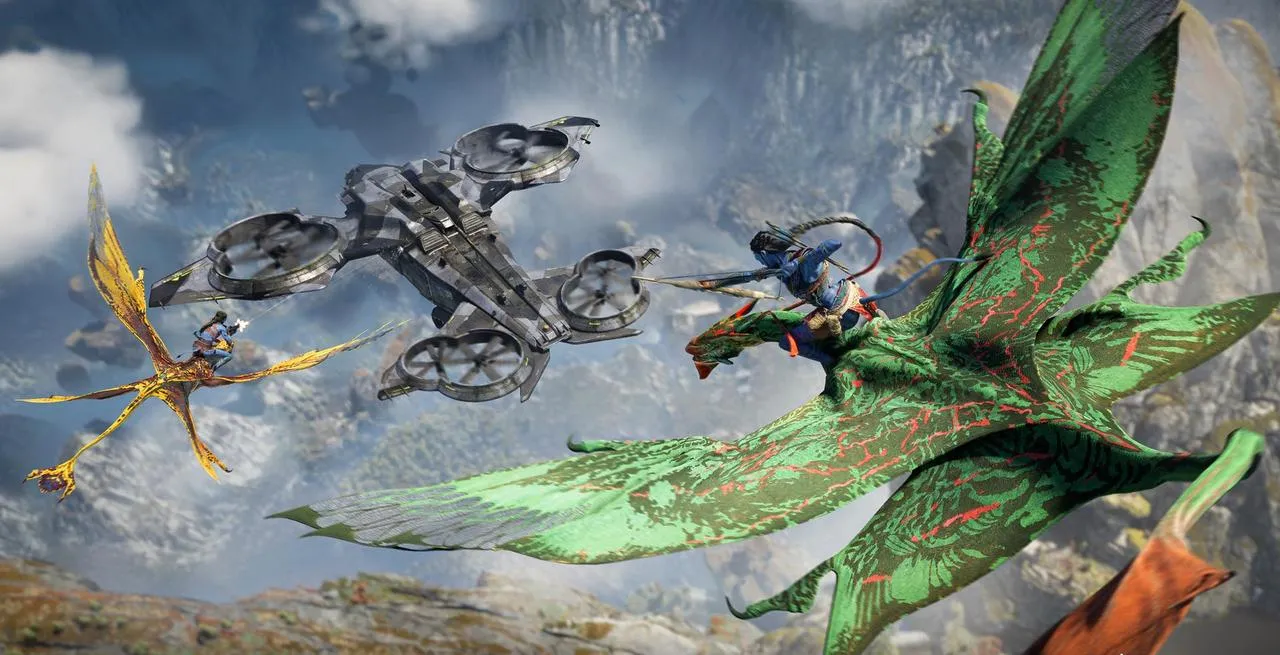 alt text: A Na'vi character soaring through the air on an Ikran, against a backdrop of Pandora's floating mountains
alt text: A Na'vi character soaring through the air on an Ikran, against a backdrop of Pandora's floating mountains
Redeeming Qualities and Conclusion
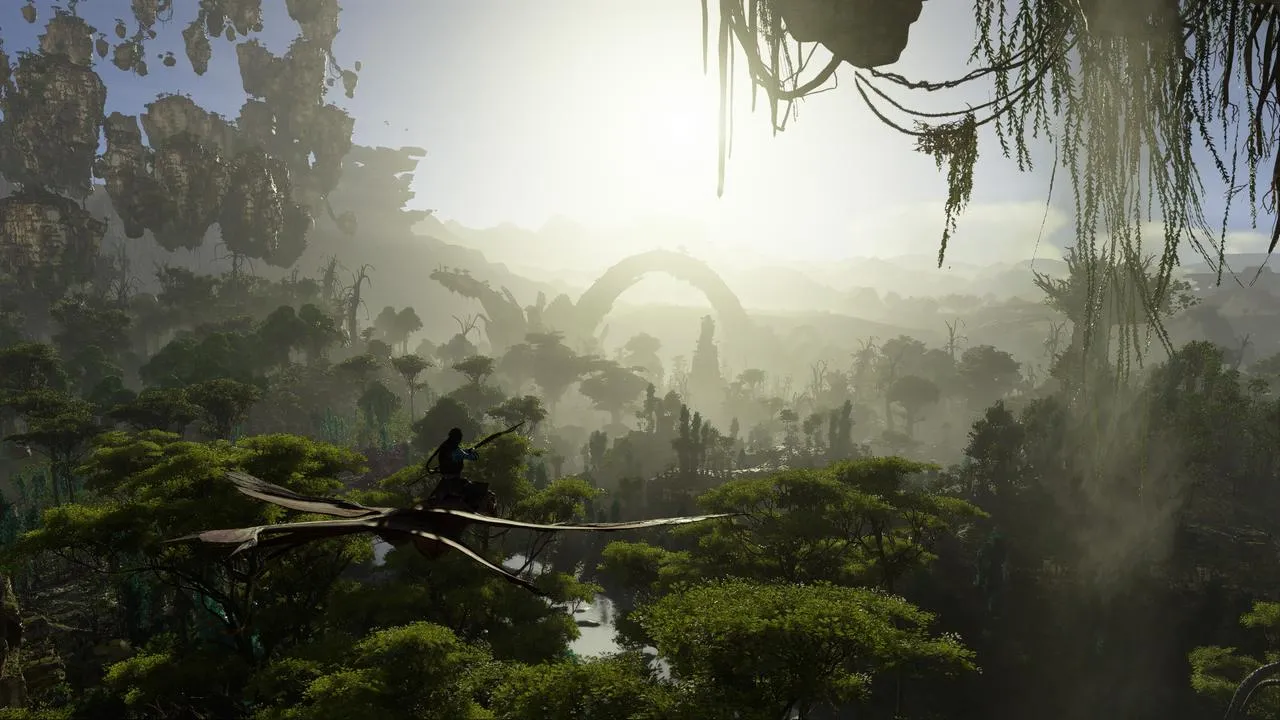 alt text: A Na'vi character standing in a field of bioluminescent plants, with Pandora's floating mountains in the background
alt text: A Na'vi character standing in a field of bioluminescent plants, with Pandora's floating mountains in the background
Despite its flaws, Avatar: Frontiers of Pandora isn’t a complete failure. The core gameplay loop, while familiar, can still be enjoyable, particularly for newcomers to the open-world genre. The traversal mechanics, including climbing and flying on an Ikran, are fluid and satisfying. The soundtrack is a standout, capturing the mystical beauty and vibrant energy of Pandora. The soaring orchestral score and evocative ambient sounds create a truly immersive experience.
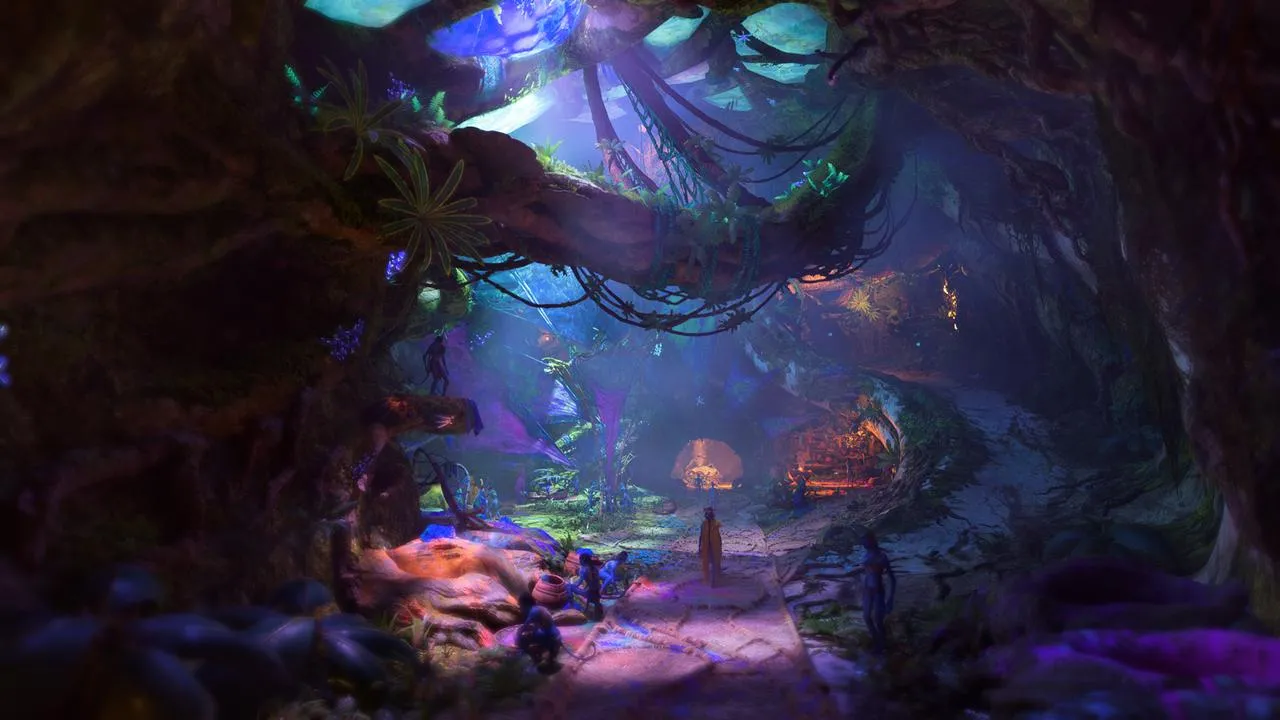 alt text: A Na'vi character interacting with a Pandoran creature
alt text: A Na'vi character interacting with a Pandoran creature
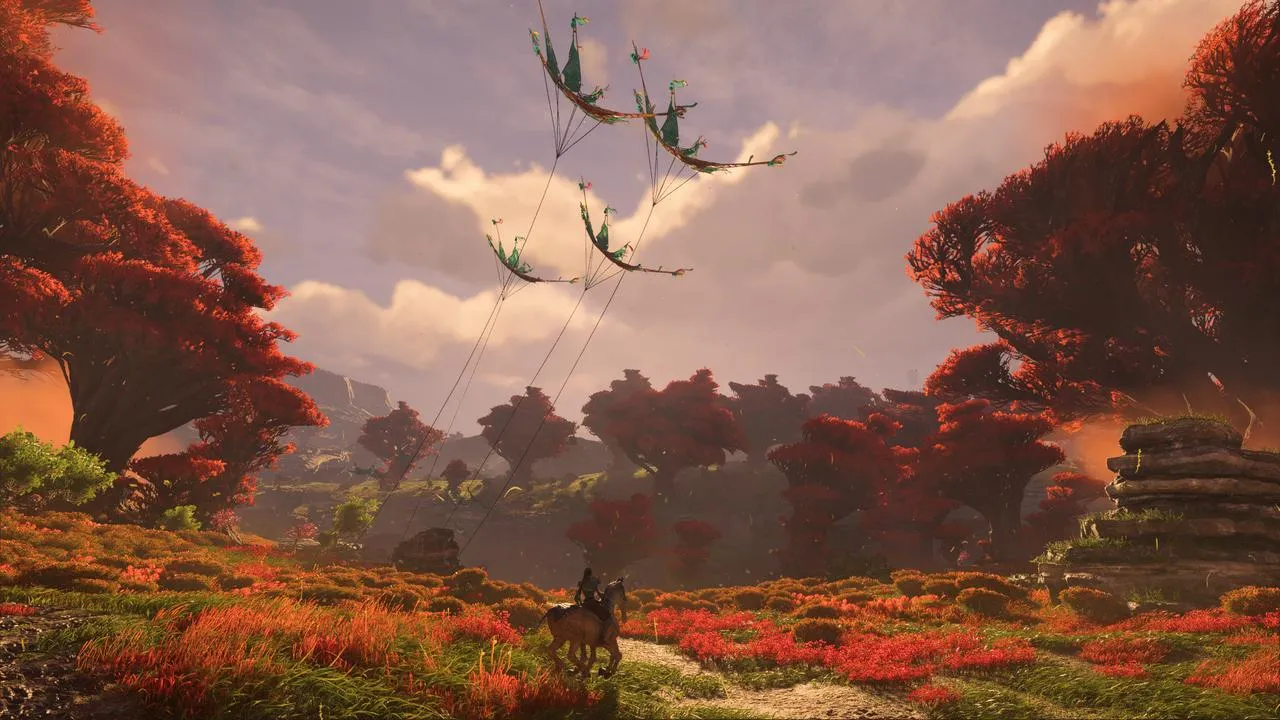 alt text: A Na'vi character standing amidst the vibrant flora of Pandora
alt text: A Na'vi character standing amidst the vibrant flora of Pandora
Ultimately, Avatar: Frontiers of Pandora feels like a missed opportunity. While it offers a visually stunning rendition of Pandora and moments of genuine wonder, it fails to innovate on the established Ubisoft open-world formula. The repetitive gameplay, unintelligent AI, and predictable narrative hold it back from reaching its full potential. It’s a beautiful, but ultimately hollow, experience.





Comments (0)